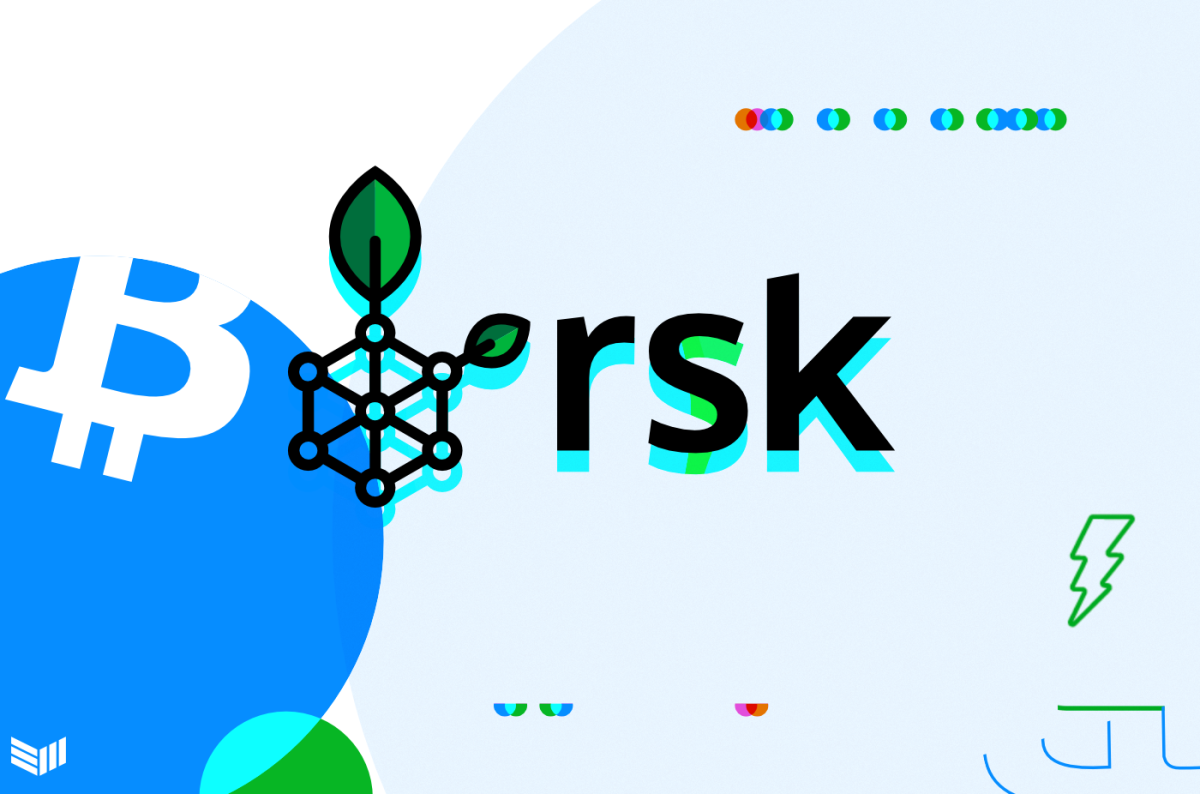A beginner-friendly guide to sidechains: Everything you need to know about it
What Are Sidechains?
Sidechains are separate blockchains that are connected to a main blockchain, also known as the parent chain, through a two-way peg. This peg allows assets to be transferred between the two chains in a secure and trustless manner.:format(jpg)/cloudfront-us-east-1.images.arcpublishing.com/coindesk/V2EL75HGEVFITCE5U752QJ4HCY.jpg)
Picture from: https://www.coindesk.com/learn/an-introduction-to-sidechains/
Sidechains are used to address some of the limitations of the main blockchain, such as scalability and privacy. They can be designed to offer faster transaction processing times, higher transaction throughput, and greater privacy than the main chain.
There are two main types of sidechains:
- Federated sidechains: These sidechains are operated by a consortium of validators that are chosen by the main chain community.
- Peg-sidechains: These sidechains are secured by the security of the main chain. They use a two-way peg to lock up assets on the main chain when assets are transferred to the sidechain, and vice versa.
Here are some of the benefits of using sidechains:
- Scalability: Sidechains can help to improve the scalability of the main chain by offloading some of the transaction processing to a separate chain.
- Privacy: Sidechains can offer greater privacy than the main chain by using different privacy-enhancing technologies.
- Speed: Sidechains can offer faster transaction processing times than the main chain.
- Customization: Sidechains can be customized to meet the specific needs of a particular application.
Here are some of the challenges of using sidechains:
- Security: Sidechains are only as secure as the main chain. If the main chain is compromised, then the sidechains may also be compromised.
- Complexity: Sidechains can be more complex to set up and use than the main chain.
- Centralization: Federated sidechains can be more centralized than peg-sidechains.
Overall, sidechains are a promising technology that can help to address some of the limitations of the main blockchain. However, it is important to carefully consider the benefits and challenges of using sidechains before deploying them in a production environment.
How Do Sidechains Work?
Sidechains function like parallel lanes on a highway, enabling smooth traffic flow for blockchain transactions without congestion on the main chain. Here's a breakdown of their operation:
Two-way Bridge:
- Mainchain Lock: Users initiate a transaction on the main chain, locking tokens in a smart contract. This acts as proof of their ownership.
- Sidechain Transfer: Equivalent pegged tokens are generated on the sidechain, representing the locked assets on the main chain.
- Validation & Consensus: Sidechain miners or validators process transactions according to its own consensus mechanism, which could be faster or more efficient than the main chain.
- Return Mechanism: When users want to return to the main chain, they initiate a corresponding transaction on the sidechain, burning their sidechain tokens. The smart contract on the main chain unlocks their original tokens upon verification.
Think of it this way:
- Mainchain: Secure but congested, like a busy highway.
- Sidechain: Faster and more efficient, like an express lane linked to the main highway.
Key Components:
- Two-way Peg: Ensures secure asset movement between chains.
- Consensus Mechanism: Different from the main chain, can be Proof-of-Stake for faster validation.
- Validators: Secure the sidechain and verify transactions.
- Smart Contracts: Lock and unlock assets on both chains.
Benefits:
- Scalability: Offloads transactions from the main chain, reducing congestion and increasing throughput.
- Privacy: Some sidechains offer enhanced privacy features for transactions.
- Speed: Faster transaction processing due to less complex consensus mechanisms.
- Customization: Sidechains can be tailored to specific applications with unique features.
Challenges:
- Security: Relies on the security of the bridge and the peg between chains.
- Complexity: Setting up and using sidechains can be more intricate than the main chain.
- Centralization: Federated sidechains may have a limited set of designated validators.
Overall, sidechains offer a promising solution for blockchain scalability and customization, but understanding their mechanisms and inherent challenges is crucial before adopting them.
Pros of Sidechains:
- Scalability: Sidechains can significantly improve the transaction throughput of the main chain by offloading transactions to a separate blockchain with its own consensus mechanism. This can lead to faster transaction times and lower fees.
- Privacy: Some sidechains offer enhanced privacy features for transactions, which can be beneficial for applications that require confidentiality. For example, they might use zk-SNARKs or other cryptographic techniques to hide transaction details.
- Speed: Sidechains can often process transactions faster than the main chain because they may use less complex consensus mechanisms, such as Proof-of-Stake, compared to Proof-of-Work used by some mainchains.
- Customization: Sidechains can be customized to meet the specific needs of different applications. This allows developers to create sidechains with features tailored to their use cases, such as gaming, payments, or supply chain management.
- Innovation: Sidechains can act as testing grounds for new features and technologies before they are deployed on the main chain. This can help to accelerate innovation and development in the blockchain space.
Cons of Sidechains:
- Security: Sidechains are only as secure as the bridge connecting them to the main chain. If the bridge is compromised, the security of both chains could be at risk. Additionally, sidechains that are not pegged to the main chain may have weaker security guarantees.
- Complexity: Setting up and using sidechains can be more complex than using the main chain. This can be a barrier to entry for some users and developers.
- Centralization: Some sidechains, particularly federated sidechains, may be more centralized than the main chain. This is because they rely on a smaller group of validators, which can raise concerns about censorship and governance.
- Dependence on the Main Chain: The functionality and security of sidechains are ultimately dependent on the health and security of the main chain. If the main chain experiences an outage or attack, sidechains could also be impacted.
- Loss of Network Effects: By using sidechains, users may miss out on the network effects of the main chain. This could make it more difficult for sidechains to gain traction and achieve critical mass.
Overall, sidechains offer a promising solution for addressing some of the limitations of blockchains, but it is important to carefully consider the pros and cons before using them. The best choice for a particular application will depend on its specific needs and requirements.
Examples of Sidechain Projects:
Several sidechain projects are tackling various blockchain limitations like scalability, privacy, and speed. Here are a few notable examples:
1. Polygon (MATIC):
- Function: Ethereum scaling solution offering fast transactions and low fees.
- Key Features: Uses its own Proof-of-Stake (PoS) network for fast validation, compatible with Ethereum Virtual Machine (EVM) for easy deployment of existing applications.
- Benefits: Significantly reduces transaction fees and time compared to Ethereum mainnet, attracts developers with familiar EVM environment.

Picture from: https://cryptoast.fr/sidechain-polygon-vise-neutralite-carbone-totale-annee-2022/
2. Liquid Network (L-BTC):
- Function: Bitcoin sidechain for faster and confidential transactions.
- Key Features: Uses its own Proof-of-Stake (PoS) sidechain with a two-way peg to Bitcoin mainnet, enables confidential transactions through Confidential Transactions (CT) protocol.
- Benefits: Offers faster and cheaper transactions than Bitcoin mainnet, enhances privacy for transactions.

Picture from: https://blog.blockstream.com/en-liquid-launch/
3. Rootstock (RSK):
- Function: Smart contract platform sidechain for Bitcoin.
- Key Features: Enables smart contract functionality on Bitcoin through its own EVM-compatible sidechain, secured by Bitcoin's mining power through a two-way peg.
- Benefits: Brings smart contracts to Bitcoin ecosystem without compromising security, expands application possibilities for Bitcoin.

Picture from: https://bitcoinmagazine.com/technical/rsk-is-evolving-powpeg-leverages-hash-power-to-switch-from-bitcoin-to-sidechain-and-back
4. Gnosis Chain (GNO):
- Function: Sidechain platform for decentralized applications (dApps) focused on prediction markets and quadratic funding.
- Key Features: Uses its own PoS consensus mechanism, offers fast and scalable environment for prediction markets and other interactive dApps.
- Benefits: Provides a dedicated platform for specific use cases like prediction markets, fosters innovation in these areas.

Picture from: https://chainstack.com/build-better-with-gnosis-chain/
5. Skale Network:
- Function: Ethereum scaling solution offering modularity and security.
- Key Features: Uses sidechains alongside the main Ethereum chain, allows developers to choose the most suitable chain for their application based on needs.
- Benefits: Provides flexibility and customization for developers, enhances security through sidechain isolation.

Picture from: https://dexplain.com/what-is-skale-network-skl-token-explained/
These are just a few examples, and the sidechain landscape is constantly evolving. As blockchain technology matures, we can expect to see even more innovative and specialized sidechain projects emerge, addressing various challenges and expanding the capabilities of the blockchain ecosystem.
Check Out My Latest Blogs:
1- SendingMe Galxe Campaign: Mint Early Supporter NFT
2- The Crypto Conundrum: Did the ETF Arrival Fizzle the Boom?
3- NEW AIRDROP: SubQuery
4- Kripto Paralar: Potansiyeliyle Gelen Riskler
5- From Zero to Dropshipping Hero
6- Don't Get Hooked:Crypto Phishing Scams (Great)
7- Cryptocurrency: Don't Let Rug Pulls Steal Your Gains
8- Demystifying the Portal to Web3: Your Guide to Web3 Wallets (Great)
I'd love for you to leave a comment below. Did something resonate with you? Have a different perspective? Ask away! Your contributions make this space come alive, and I can't wait to dive into some awesome discussions with you all.































